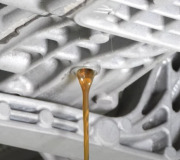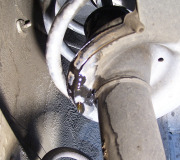Not very practical. Engine mounts will be different, even if you're installing a newer 318 or 360. Fuel injection systems will require their specific Engine Computers and wiring harnesses and all the related sensors. They run on around 50 pounds of fuel pressure. How are you going to put the electric fuel pump and return line into the gas tank? Chrysler's small block engines, (273, 318, 340, and 360), were really tough, reliable, and easy to work on, and were about 100 pounds lighter than GM's 350 and Ford's 302. Parts are still easy to find, both new and used.
One of my Challengers has the dandy 340 c.I. Four-speed. If you find a '70 or '71 model, you can easily adapt it to the '72 and newer electronic ignition, and you won't have any troublesome computers to worry about. Dodge had the first truly electronic ignition system in '72, and Plymouth and Chrysler went to it in '73. Everyone else came years later and none were as reliable or as easy to diagnose and repair.
One of the things that made me fall in love with Chrysler in the '70s was that so much interchanged between engines and car models and years. I put in a few different engine and transmission sizes and had to do almost no fabrication, except for one Challenger that I turned into a race car. You aren't going to be so lucky. If you try to install a late model engine, you will have a project to dream about for years. If you install an engine that was available in that car, you'll be out on the road enjoying it, not imagining what it might be like. The Challenger was available with the 383 and 440 big blocks too but they didn't handle as well due to the increased front end weight. My 340 is more than capable of allowing me to pass people when necessary, ... And I look for as many reasons to pass people as I can find!
SPONSORED LINKS
Saturday, December 29th, 2012 AT 10:12 AM



